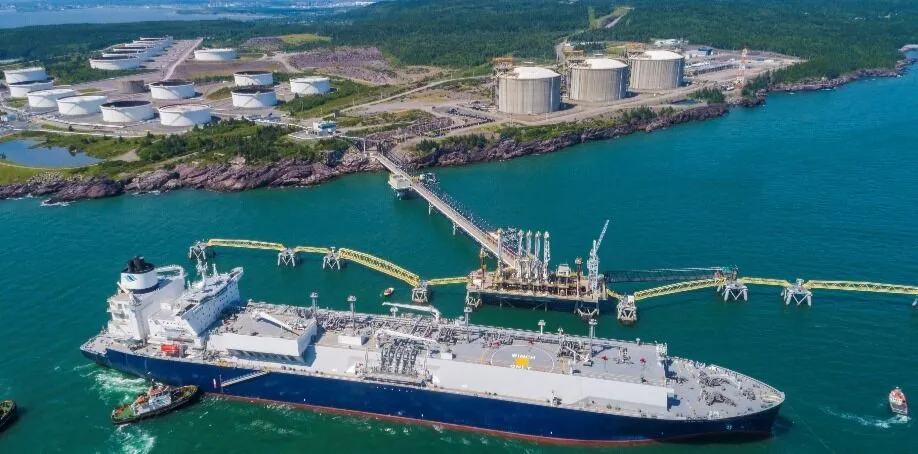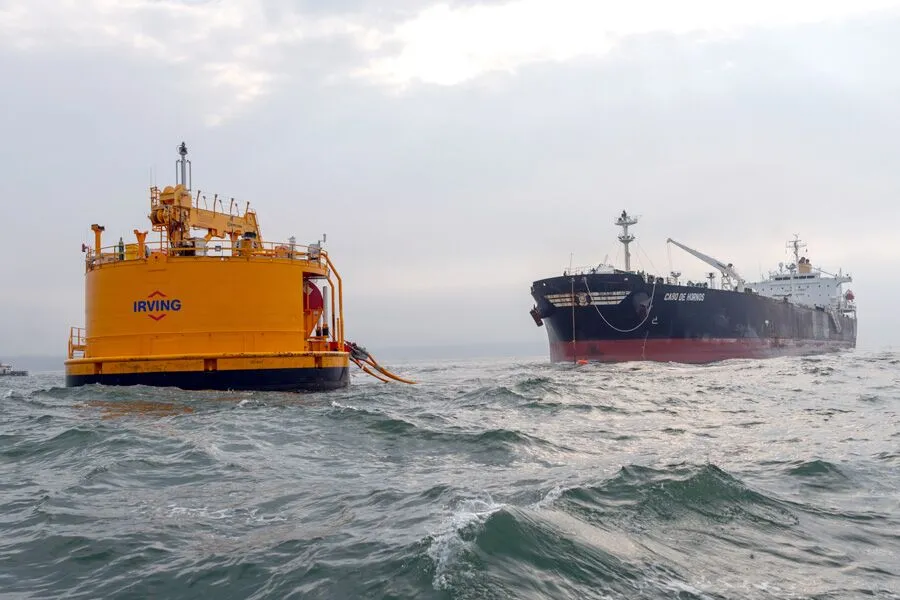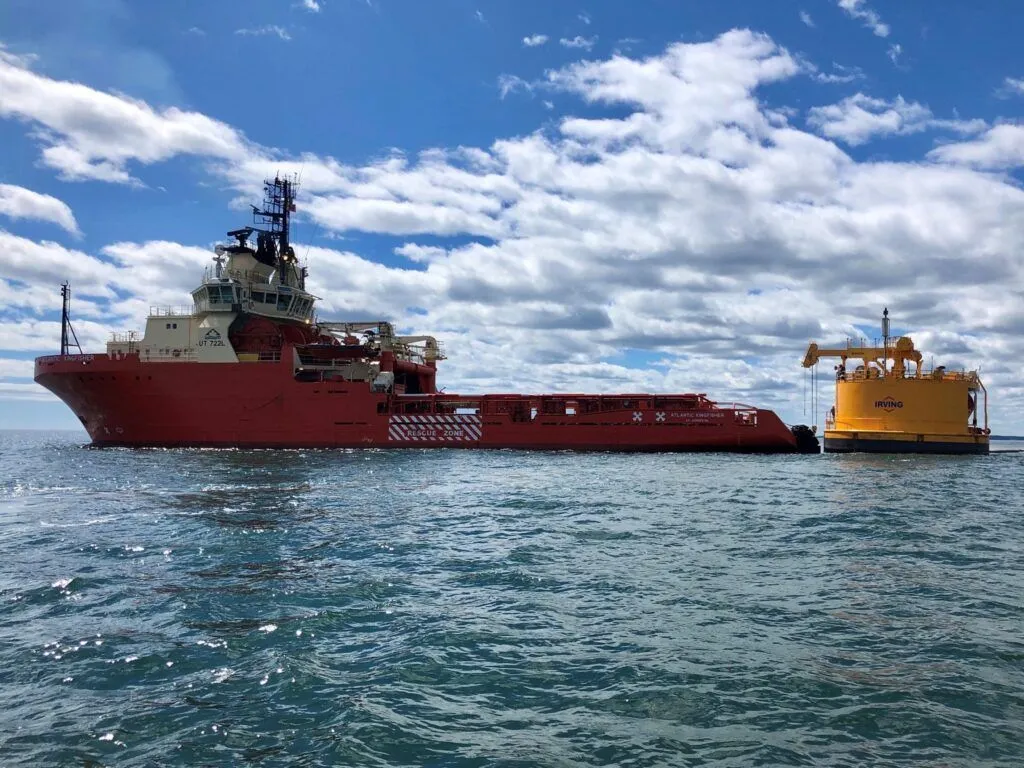Hercules Saint John, NB – Supporting Canaport Oil and Gas
Hercules has 2 dual branches (encompassing Hercules and Stellar Industrial) in New Brunswick supporting a multitude of business sectors with their rigging, material handling and industrial requirements. In Hercules Saint John one of those sectors is Oil and Gas.
One of our recent projects includes high volume crane wires, web slings and mooring lines for the local oil and gas industry, and the monobuoy in the harbour.
Our full service rigging shop consists of our Branch Manager(s), 1 CSR, 2 Inspectors and 2 Warehouse Associates. We can provide a full range of rigging inspections, testing and certification services when it comes to your annual inspections, we provide on-site inspections. We stock leading name brands such as Crosby, 3M, Tractel, Kito, Columbus McKinnon and Bridon Bekaert our sister company Atlantic Crane is also located in the same industrial park. Atlantic Crane is Atlantic Canada’s leading crane manufacturer and solution provider.

Hercules – Saint John
9 Dedication Street
Saint John, NB
Tel: 506-696-3707
Email: [email protected]
Hours: Monday to Friday 8:00 am to 5:00 pm
Atlantic Crane – Saint John
280 Grandview Ave.
Saint John, NB
Tel: 506-652-9438
Email: [email protected]
Hours: Monday to Friday 8:00 am to 5:00 pm
Stellar Industrial – Saint John
9 Dedication Street
Saint John, NB
Tel: 506-652-3620
Email: [email protected]
Hours: Monday to Friday 8:00 am to 5:00 pm
Canaport Oil and Gas is a joint energy project owned by Repsol YPF and Irving Oil in Canada. The project, Canada’s first LNG regasification plant, began operations in the second quarter of 2009.
The Canaport Oil and Gas terminal is located adjacent to and immediately east of the Canaport Crude receiving terminal. It is Canada’s first LNG terminal and the first LNG terminal built in eastern North America in 30 years. It can accommodate the world’s largest LNG tankers.
The plant provides natural gas to the Canadian and American domestic markets.
Canaport Oil and Gas LNG Infrastructure
Canaport LNG consists of the following infrastructure:
- A pier, consisting of a terminal jetty constructed from 16 marine support jackets, 12 roadway and pipe support trestle sections, an LNG receiving platform, 10 mooring hooks, four berthing fenders, an access gangway and eight catwalk structures.
- Three (3) insulated storage tanks on shore.
The construction of the Canaport LNG was concurrent with construction of the Brunswick Pipeline which transports the natural gas from Canaport LNG to markets.

How it works
In *specially made tankers, LNG is transported by ship to Saint John. It is offloaded by being pumped through pipes into storage tanks at the Canaport terminal.
- *Modern LNG tanks require highly specialised materials and extremely sophisticated engineering construction techniques. The tanks are double-walled with highly efficient insulation between the walls to keep the stored natural gas in a liquid state for safe and efficient handling. The tanks maintain extremely cold temperatures of at least -161.5°C.
- The gas is then discharged by being pumped through pipes into storage tanks at the Canaport terminal.
- The LNG is then restored in a highly controlled process to its original gaseous form through a processcalled regasification.
- The LNG is then distributed via the Brunswick Pipeline for use as fuel for markets in Canada and the United States.
- Canaport is able to supply 20 per cent of the natural gas needs of Canada and the northeast U.S., according to the company’s website.
The facility can send out a maximum of 1.2 billion cubic feet, or 28 million cubic metres, of natural gas per day, which is enough to heat five million homes.
Canaport Crude – Monobuoy
FAST FACT: Did you know that Hercules SLR Saint John provides Mooring Lines for the Monobuoy?
Crude oil is offloaded at Irving’s monobuoy in the harbour. In layman’s terms, oil tankers are tethered to the floating monobuoy (SBM – Single Buoy Mooring) for discharge process. An underwater pipeline transfers crude oil to holding tanks on shore. A land pipeline transfers the oil from storage tanks to the refinery.

In rough conditions crude can be unloaded at the LNG pier which can accommodate oil as well as gas.
When a ship is ready to offload product, a seven member team get onboard the vessel and hook up the equipment.
To monitor the system, divers slowly submerge 150 feet to the ocean floor from the Monobuoy, which connects and ships to the onshore tanks via subsea pipeline. With the powerful Bay of Fundy tides, the team can only dive at *slack tide, when the current is not too strong.
*Slack tide is a short period in a body of tidal water when the water is completely unstressed, and there is no movement either way in the tidal stream

Oil tankers from around the world unload regularly through an underwater piping system at the six-million barrel Canaport tank farm in Saint John. (Image: Irving Oil/Facebook)
——————————————————————————————————————————————
The Hercules Group of Companies encompasses a wide portfolio of products and services across 7 diverse companies.


